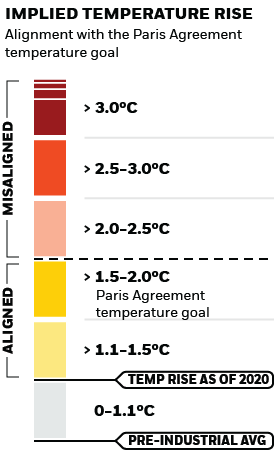Performance
Performance
Chart
Distributions
-
Returns
| 2020 | 2021 | 2022 | 2023 | 2024 | |
|---|---|---|---|---|---|
| Total Return (%) | -9.3 | 18.9 | 26.3 | ||
| Benchmark (%) | -9.4 | 18.9 | 26.2 |
Performance is shown after deduction of ongoing charges. Any entry and exit charges are excluded from the calculation.
| From 31/Dec/2019 To 31/Dec/2020 |
From 31/Dec/2020 To 31/Dec/2021 |
From 31/Dec/2021 To 31/Dec/2022 |
From 31/Dec/2022 To 31/Dec/2023 |
From 31/Dec/2023 To 31/Dec/2024 |
|
|---|---|---|---|---|---|
|
Total Return (%)
as of 31/Dec/2024 |
- | - | -9.32 | 18.86 | 26.30 |
|
Benchmark (%)
as of 31/Dec/2024 |
- | - | -9.39 | 18.86 | 26.24 |
| 1y | 3y | 5y | 10y | Incept. | |
|---|---|---|---|---|---|
| Total Return (%) | 18.58 | 13.95 | - | - | 12.21 |
| Benchmark (%) | 18.53 | 13.94 | - | - | 12.13 |
| YTD | 1m | 3m | 6m | 1y | 3y | 5y | 10y | Incept. | |
|---|---|---|---|---|---|---|---|---|---|
| Total Return (%) | 0.88 | -2.83 | -0.39 | 10.90 | 18.58 | 47.98 | - | - | 49.20 |
| Benchmark (%) | 0.89 | -2.83 | -0.38 | 10.84 | 18.53 | 47.92 | - | - | 48.83 |
The figures shown relate to past performance. Past performance is not a reliable indicator of future performance. Markets could develop very differently in the future. It can help you to assess how the fund has been managed in the past
Share Class and Benchmark performance displayed in GBP, hedged share class benchmark performance is displayed in USD.
Performance is shown on a Net Asset Value (NAV) basis, with gross income reinvested where applicable. The return of your investment may increase or decrease as a result of currency fluctuations if your investment is made in a currency other than that used in the past performance calculation. Source: Blackrock
Key Facts
Key Facts
Portfolio Characteristics
Portfolio Characteristics
Risk Indicator
Risk Indicator
Ratings
Holdings
Holdings
| Name | Weight (%) |
|---|---|
| APPLE INC | 6.70 |
| NVIDIA CORP | 5.63 |
| MICROSOFT CORP | 5.16 |
| AMAZON COM INC | 3.70 |
| META PLATFORMS INC CLASS A | 2.68 |
| Name | Weight (%) |
|---|---|
| ALPHABET INC CLASS A | 1.83 |
| BROADCOM INC | 1.64 |
| ALPHABET INC CLASS C | 1.58 |
| TESLA INC | 1.56 |
| JPMORGAN CHASE & CO | 1.37 |
Exposure Breakdowns
Exposure Breakdowns
Pricing & Exchange
Pricing & Exchange
Portfolio Managers
Portfolio Managers


PRIIPs Performance Scenarios
PRIIPs Performance Scenarios
| Scenarios |
If you exit after 1 year
|
If you exit after 5 years
|
|
|---|---|---|---|
|
Minimum
There is no minimum guaranteed return. You could lose some or all of your investment.
|
|||
|
Stress
What you might get back after costs
Average return each year
|
7’480 GBP
-25.2%
|
5’030 GBP
-12.8%
|
|
|
Unfavourable
What you might get back after costs
Average return each year
|
9’070 GBP
-9.3%
|
11’860 GBP
3.5%
|
|
|
Moderate
What you might get back after costs
Average return each year
|
11’460 GBP
14.6%
|
19’330 GBP
14.1%
|
|
|
Favourable
What you might get back after costs
Average return each year
|
14’350 GBP
43.5%
|
22’510 GBP
17.6%
|
|
The stress scenario shows what you might get back in extreme market circumstances.
Sustainability Characteristics
Sustainability Characteristics
Sustainability Characteristics provide investors with specific non-traditional metrics. Alongside other metrics and information, these enable investors to evaluate funds on certain environmental, social and governance characteristics. Sustainability Characteristics do not provide an indication of current or future performance nor do they represent the potential risk and reward profile of a fund. They are provided for transparency and for information purposes only. Sustainability Characteristics should not be considered solely or in isolation, but instead are one type of information that investors may wish to consider when assessing a fund.
The metrics are not indicative of how or whether ESG factors will be integrated into a fund. Unless otherwise stated in fund documentation and included within a fund’s investment objective, the metrics do not change a fund’s investment objective or constrain the fund’s investable universe, and there is no indication that an ESG or Impact focused investment strategy or exclusionary screens will be adopted by a fund. For more information regarding a fund's investment strategy, please see the fund's prospectus.
Review the MSCI methodologies behind Sustainability Characteristics using the links below.
To be included in MSCI ESG Fund Ratings, 65% (or 50% for bond funds and money market funds) of the fund’s gross weight must come from securities with ESG coverage by MSCI ESG Research (certain cash positions and other asset types deemed not relevant for ESG analysis by MSCI are removed prior to calculating a fund’s gross weight; the absolute values of short positions are included but treated as uncovered), the fund’s holdings date must be less than one year old, and the fund must have at least ten securities.
Business Involvement
Business Involvement
Business Involvement metrics can help investors gain a more comprehensive view of specific activities in which a fund may be exposed through its investments.
Business Involvement metrics are not indicative of a fund’s investment objective, and, unless otherwise stated in fund documentation and included within a fund’s investment objective, do not change a fund’s investment objective or constrain the fund’s investable universe, and there is no indication that an ESG or Impact focused investment strategy or exclusionary screens will be adopted by a fund. For more information regarding a fund's investment strategy, please see the fund's prospectus.
Review the MSCI methodology behind the Business Involvement metrics, using links below.
Business Involvement metrics are calculated by BlackRock using data from MSCI ESG Research which provides a profile of each company’s specific business involvement. BlackRock leverages this data to provide a summed up view across holdings and translates it to a fund's market value exposure to the listed Business Involvement areas above.
Business Involvement metrics are designed only to identify companies where MSCI has conducted research and identified as having involvement in the covered activity. As a result, it is possible there is additional involvement in these covered activities where MSCI does not have coverage. This information should not be used to produce comprehensive lists of companies without involvement. Business Involvement metrics are only displayed if at least 1% of the fund’s gross weight includes securities covered by MSCI ESG Research.


